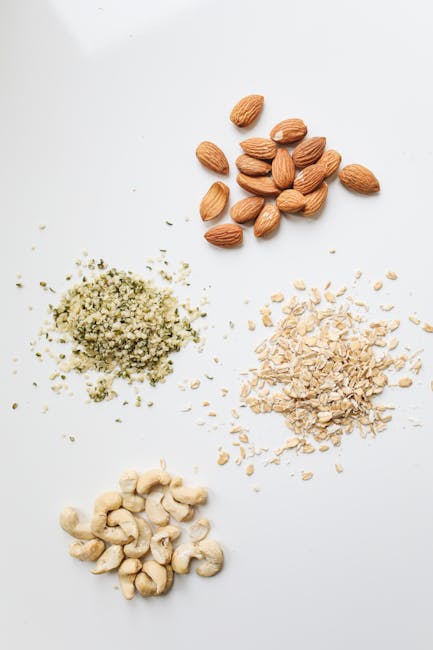Plant-Based Eating Guide: Transitioning Smoothly
In recent years, the plant-based eating movement has gained significant momentum, driven by concerns over health, environmental sustainability, and animal welfare. For those new to the concept, transitioning to a plant-based diet might seem daunting. However, with the right approach, it can be a rewarding journey that enriches your health and lifestyle. This comprehensive guide will help you transition smoothly to a plant-based diet, offering actionable tips, statistics, and insights to support your journey.
The Rise of Plant-Based Diets
According to a 2019 study by the International Food Information Council, nearly 25% of Americans reported cutting back on meat consumption. Further, the Plant Based Foods Association noted a 27% increase in plant-based food sales in 2020 alone. These statistics indicate a growing trend and interest in plant-based eating, making it more accessible than ever before.
Understanding Plant-Based Eating
Before diving into the transition, it’s essential to understand what plant-based eating entails. A plant-based diet focuses primarily on foods derived from plants. This includes not only fruits and vegetables, but also nuts, seeds, oils, whole grains, legumes, and beans. Unlike a vegan diet, which excludes all animal products, plant-based eating can be more flexible and may include small amounts of animal products.
Health Benefits of a Plant-Based Diet
Research consistently emphasizes the health benefits of plant-based diets. A study published in the Journal of the American College of Nutrition found that plant-based diets are linked to reduced risks of heart disease, hypertension, diabetes, and obesity. The abundance of fiber, antioxidants, and essential nutrients in plant-based foods supports overall health and wellness.
Steps to Transition Smoothly to a Plant-Based Diet
1. Start with Plant-Based Meals
Begin by incorporating plant-based meals into your diet a few times a week. Focus on dishes that you already enjoy and modify them to be plant-based. For example, try a hearty vegetable stir-fry, a lentil soup, or a chickpea curry. This gradual approach allows your taste buds and digestive system to adjust.
2. Explore Plant-Based Alternatives
Today, there is a plethora of plant-based alternatives available for traditional animal products. From almond milk to tofu-based cheeses, exploring these options can make the transition more enjoyable. Brands like Beyond Meat and Impossible Foods offer delicious plant-based meats that can satisfy your cravings.
3. Educate Yourself on Nutritional Needs
A common concern with plant-based eating is ensuring adequate nutrition. Pay special attention to nutrients like protein, vitamin B12, iron, calcium, and omega-3 fatty acids. Foods like lentils, quinoa, fortified plant milks, leafy greens, and flaxseeds can help meet these nutritional needs.
4. Plan Your Meals
Meal planning is a crucial step in transitioning smoothly. By planning your meals, you can ensure a balanced intake of nutrients and avoid the temptation of reaching for non-plant-based foods. Utilize resources like cookbooks, blogs, and meal prep guides to keep your meals exciting and varied.
5. Connect with a Community
Joining a community of like-minded individuals can offer support and inspiration. Online platforms, social media groups, and local meet-ups can provide a wealth of information, recipes, and encouragement. Sharing your journey with others can make the transition feel less isolating.
Common Challenges and How to Overcome Them
Cravings for Non-Plant-Based Foods
It’s natural to experience cravings for familiar non-plant-based foods. Combat this by finding satisfying plant-based alternatives and experimenting with new flavors. Over time, your palate will adapt, and you may find yourself preferring plant-based options.
Dining Out on a Plant-Based Diet
Dining out can be challenging, but many restaurants now offer plant-based options. Research menus ahead of time, and don’t hesitate to ask if dishes can be modified. Many chefs are happy to accommodate dietary preferences.
Social and Family Dynamics
Explaining your dietary choices to family and friends can sometimes be met with resistance. Open communication and sharing the reasons behind your transition can foster understanding. Offer to prepare plant-based dishes for gatherings to introduce others to the benefits and flavors of plant-based eating.
Conclusion: Embrace the Plant-Based Journey
Transitioning to a plant-based diet is not about perfection but progress. By taking small, intentional steps, you can embrace this lifestyle in a way that works for you. Whether you choose to go entirely plant-based or incorporate more plant-based meals into your diet, the benefits for your health and the planet are significant. Remember, every plant-based meal is a step towards a healthier and more sustainable future.
As you embark on this journey, be patient with yourself and enjoy the process of discovering new foods, flavors, and experiences. The world of plant-based eating is diverse and exciting, offering endless opportunities for nourishment and growth.



